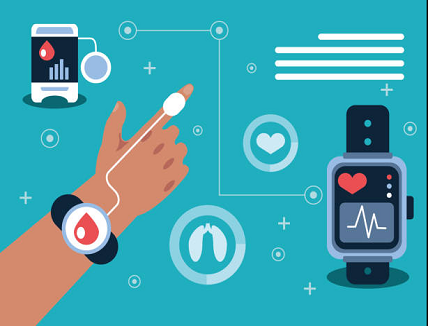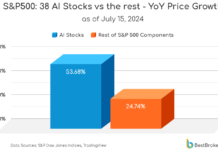
Wearable technology in the healthcare sector refers to electronic devices that people can wear, such as Fitbits and smartwatches, created to collect data about their health and fitness. The growing desire for wearables has created a thriving sector, and now insurers and businesses are seeing the benefits of providing wearable health technologies to their customers and staff. Smartwatches have become ubiquitous because of wearable fitness technology, and the evolution of wearable gadgets shows no signs of slowing down. By 2030, the wearable device market is foreseen to earn USD 1,74,480.15 million, according to a report by Market Research Future.
Wearable Medical Device Market usage has more than tripled in the previous four years, driven by customers’ growing desire to track their health and keep check of their vital signs. Artificial intelligence, smart sensors, robots, big data, radar technologies, and digital wearables are all capable of managing and preventing diseases today. They can measure body temperature, blood pressure, heart rate, and breathing in the elderly and identify dangers such as deteriorating health, diseases, and potentially dangerous conditions like high blood pressure or breathing problems.
What Is Wearable Healthcare Technology?
These gadgets can even transmit real-time health data to a physician or other healthcare expert. Wearables demand is expected to increase in the coming years as more customers express interest in sharing their data with providers and insurers. Wearable devices offer a wide range of uses in healthcare, from cardiovascular ailments, hypertension, and muscle problems to neurocognitive disorders, including Alzheimer’s, Parkinson’s disease, and other diseases. For this aim, several types of wearables are utilized, such as skin-based wearables such as textile-based, tattoo-based, and biofluidic-based wearables. Wearables have recently shown promising advancements as a medicine delivery mechanism, improving their utility in customized healthcare. These wearables come with issues that must be addressed before being commercialized as a fully individualized healthcare system.
Functions of Wearable Health Technology
Medical wearables allow healthcare workers to monitor patient health in real-time and utilize the data to make prompt adjustments to disease management plans. Patients benefit from adopting the wearable device by keeping track of their health data and seeking consultations if the data shows concerning patterns.
- Patient Rehabilitation
Wearables for patient recovery can help with physical therapy administration and data collection on rehabilitation progress at home or in the hospital. The main benefit is that the wearables allow medical personnel to precisely capture how patients complete physiotherapy activities and monitor rehabilitation effectiveness and patients’ vitals while performing them.
- Early Disease Diagnostics
Wearable diagnostics equipment can detect intermittent symptoms (such as heart palpitations) that may have gone unnoticed during doctor visits. When a patient has such uncommon symptoms, a doctor may recommend continual wearable monitoring. These gadgets help enhance patient outcomes by allowing for fact-based disease diagnosis.
- Patient Therapy Delivery
Medical wearables aid in treating chronic disease symptoms and maintaining patients’ health, all while collecting data on wearable-enabled therapy delivery for assessment by doctors.
- Activity Tracking
Wearables that track physical activity are designed to keep patients healthy and improve their quality of life. Wearables allow for continuous monitoring of physical activity quantity and quality, assisting patients in making well-informed lifestyle changes. Before being integrated into wearable sensors, biosensors were utilized as invasive devices in controlled lab environments. POC wearable gadgets have transformed the healthcare system by reducing hospital workload and giving more accurate and timely information. Head-based wearables, eye-based wearables, and wrist-based wearables are examples of wearables used for various body parts. These wearables keep track of many psychological and physiological indicators that can be utilized to identify various illnesses.
Future Market Trends
Digital health tracking systems are being utilized for disease management, connecting people with healthcare practitioners, and proactively alerting any difficulties. The COVID-19 pandemic, somewhat
predictably, has accelerated this trend. According to a recent study by Stanford Medicine and Rock Health, the pandemic accelerated digital use, both for wearables and other telemedicine tools.
The current wave of adoption comes from ordinary people who recognize they need to start taking care of themselves, not from the ‘worried well. Wearables in the next generation will be more complex and accurate and will be better equipped to give the kinds of data that patients and physicians can use. This advancement in medical devices and technology is driving market trends towards more sophisticated wearable solutions. Conducting comprehensive market research for medical devices, including emerging wearables, is crucial for healthcare stakeholders to stay ahead of the curve. Market research firms like IDR Medical (you can Discover our services if interested) tend to provide invaluable insights into the latest medical products and technologies reshaping patient monitoring and care delivery models. As wearables become more capable of capturing precise health data, their impact on personalized medicine and remote patient management will continue to grow.
Cybersecurity and expenses are two more related issues. Hospitals and health systems are still unprepared to gather and analyze data from wearables, and their cybersecurity capability lags behind that of other businesses. Payers, providers, and device makers are not aligned in the typical healthcare payment process.
Under a fee-for-service model, none of these parties have a financial incentive to use wearables for what they’re best at preventing and managing chronic disease.According to current estimates, wearable technology is expected to
save roughly $200 billion in the healthcare industry over the next three decades. Wearable technology’s increasingly credible prognostic potential allows for this cost-cutting. Because wearable technologies
are instances of clinical decision support systems, they can forecast the emergence of dormant illnesses like those affecting the lungs before they appear clinically. This enables patients to seek more affordable and effective treatment solutions while also improving their prediction. As a result, patients will not need to undergo lengthy, exhausting, and costly treatment processes.

















